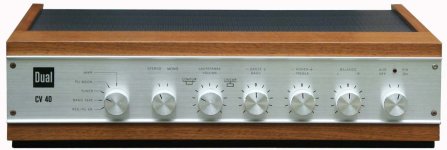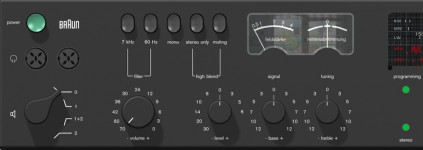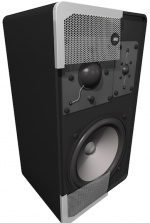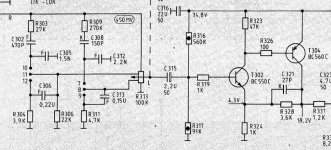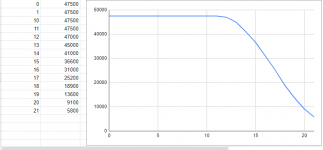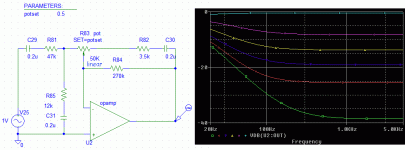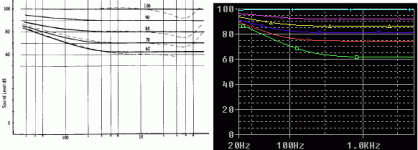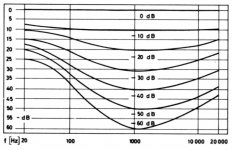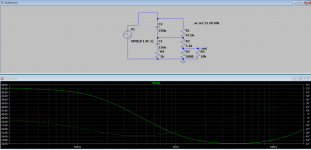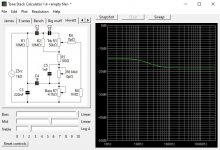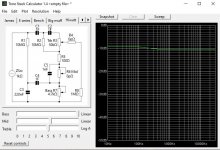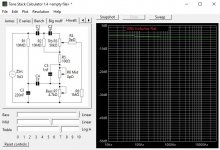I came across the Dual and Braun while looking for Dieter Rams designs. I think the packaging is excellent and if the outside is nice then following form/function the circuits must have sounded heavenly.. Simple and functional no more no less.
So I study the early designs. Braun, Dual , Telefunken, Philips and so on. I'll have to look at Grundig. Many companies attempted to copy Dieter Rams but it usually did look like a style copy, not quite correct. The early Sansui circuits are also interesting but not packaging. Some circuits I have adapted to valve-opamp hybrids. It is not difficult and the fft is exactly what I want.
The images are from BRAUN, BRAUN Hifi, Braun design, Thomas-Mathias Bock, Dieter Rams,Computer Graphic,
So I study the early designs. Braun, Dual , Telefunken, Philips and so on. I'll have to look at Grundig. Many companies attempted to copy Dieter Rams but it usually did look like a style copy, not quite correct. The early Sansui circuits are also interesting but not packaging. Some circuits I have adapted to valve-opamp hybrids. It is not difficult and the fft is exactly what I want.
The images are from BRAUN, BRAUN Hifi, Braun design, Thomas-Mathias Bock, Dieter Rams,Computer Graphic,
Attachments
Does anyone have a circuit to make use of a tapped volume control? I have an ALPS RK27 type (probably a clone) stepped attenuator with a loudness tap, I wouldn't mind trying a passive loudness circuit on it, so that it is active at lower positions only. Thanks in advance!
This is 5 pin volume pot in Grundig SV 2000 amplifier.
Many Grundig models use that double loudness.
To copy/test the Dual loudness ckt a stepped attenuator can easily be made to operate as a 5 terminal volume control i'm thinking.
for ref here is sv2000 passive loudness volume ckt using Sziklai pair make-up amp. Its not switched so maybe less parts.
Attachments
Last edited:
OK so in my case the tap seems to have a resistance from the input pin as follows:
1-10 : 47.5k
11-22 : reduces by ~4k each step, ending in 5.8k at position 22 (it's a bit more gradual to start, then reasonably linear until it reaches step 22)
Question is, how do I use this tap to create a loudness control? I feel like I'm missing something obvious. This is a 50k log taper attenuator.
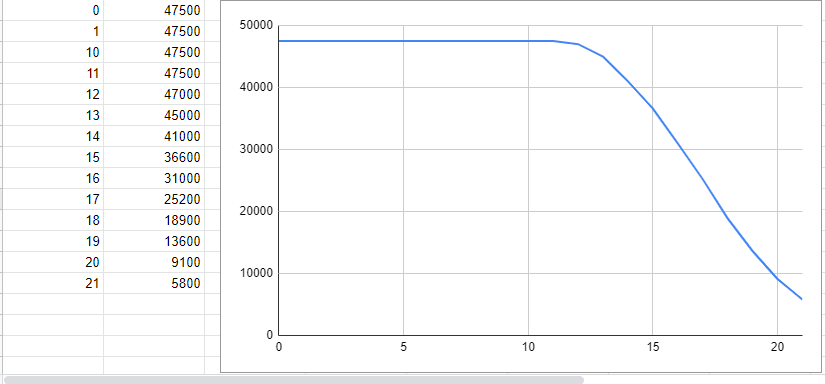
1-10 : 47.5k
11-22 : reduces by ~4k each step, ending in 5.8k at position 22 (it's a bit more gradual to start, then reasonably linear until it reaches step 22)
Question is, how do I use this tap to create a loudness control? I feel like I'm missing something obvious. This is a 50k log taper attenuator.
Attachments
my first try would be to use the grundig circuit on knee of your plot.
while the mirror knee gets the treble side.
if you do a plot from hi side of pot to wiper u see the mirror knee.
while the mirror knee gets the treble side.
if you do a plot from hi side of pot to wiper u see the mirror knee.
Hmm @jfetter not sure that will work. As it is a volume attenuator with only one "tap", input, gnd, and wiper. And the main input/gnd/wiper is log/audio taper.
its a bank of resistors, so move the switch to knee position and look at switch contacts.
that point is the loud tap.
of course a wire must be soldered and brought out for the loudness ckt.
that point is the loud tap.
of course a wire must be soldered and brought out for the loudness ckt.
Dear all,
This will be a bit frustrating for many people but if you have access to the JAES or are prepared to buy this article the following would seem to be a very neat solution for most needs. Its from 1976. It has variable break points for the bass region. Elegant, simple, cheap and highly effective.
Cheers, Jonathan
AES E-Library >> Practical Loudness: An Active Circuit Design Approach
AES E-Library
Practical Loudness: An Active Circuit Design Approach
Document Thumbnail
"A loudness control fully compensated at mid and low frequencies has been designed for home use which can be aligned to match equal-loudness contours over about a 40-dB attenuation range. Using a linear potentiometer and an operational amplifier, the circuit can provide a smooth audio taper as well as a control of volume which is free of tonal balance coloration".
Authors: Newcomb, Jr., Arthur L.; Young, Richard N.
Affiliation: Langley Research Center, National Aeronautic and Space Administration, Hampton, VA
JAES Volume 24 Issue 1 pp. 32-35; February 1976
Publication Date: February 1, 1976 Import into BibTeX
Permalink: AES E-Library » Practical Loudness: An Active Circuit Design Approach
Click to purchase paper as a non-member or login as an AES member. If your company or school subscribes to the E-Library then switch to the institutional version. If you are not an AES member and would like to subscribe to the E-Library then Join the AES!
This paper costs $33 for non-members and is free for AES members and E-Library subscribers.
Learn more about the AES E-Library
E-Library Location: (CD aes3) /jrnl6877/1976/7389.pdf
This will be a bit frustrating for many people but if you have access to the JAES or are prepared to buy this article the following would seem to be a very neat solution for most needs. Its from 1976. It has variable break points for the bass region. Elegant, simple, cheap and highly effective.
Cheers, Jonathan
AES E-Library >> Practical Loudness: An Active Circuit Design Approach
AES E-Library
Practical Loudness: An Active Circuit Design Approach
Document Thumbnail
"A loudness control fully compensated at mid and low frequencies has been designed for home use which can be aligned to match equal-loudness contours over about a 40-dB attenuation range. Using a linear potentiometer and an operational amplifier, the circuit can provide a smooth audio taper as well as a control of volume which is free of tonal balance coloration".
Authors: Newcomb, Jr., Arthur L.; Young, Richard N.
Affiliation: Langley Research Center, National Aeronautic and Space Administration, Hampton, VA
JAES Volume 24 Issue 1 pp. 32-35; February 1976
Publication Date: February 1, 1976 Import into BibTeX
Permalink: AES E-Library » Practical Loudness: An Active Circuit Design Approach
Click to purchase paper as a non-member or login as an AES member. If your company or school subscribes to the E-Library then switch to the institutional version. If you are not an AES member and would like to subscribe to the E-Library then Join the AES!
This paper costs $33 for non-members and is free for AES members and E-Library subscribers.
Learn more about the AES E-Library
E-Library Location: (CD aes3) /jrnl6877/1976/7389.pdf
Last edited:
Figured it out now ... the amplifier is attached and it presents a low impedance relative to the 50k pot... hence it's throwing my measurements out. Of course it is just a center tap (at about 47.5k/2.5k). Which I can make sense of
...Practical Loudness: An Active Circuit Design Approach ...Newcomb, Jr., Arthur L.; Young, Richard N.
JAES Volume 24 Issue 1 pp. 32-35; February 1976
Permalink: AES E-Library » Practical Loudness: An Active Circuit Design Approach ...
That article and drawing is copyright but I can re-draw the core drawing in the act of testing/critiquing the idea.
Attachments
This seems like it should work fairly well for the tapped 50k. Any suggestions? Note ltspice doesn't have any built in pots so I knocked something up quickly. values based on measurements off my actual pot.
The effect lessens as the volume is turned up.
The effect lessens as the volume is turned up.
An externally hosted image should be here but it was not working when we last tested it.
Attachments
That is a step in good direction. I was thinking of testing a "volume" control like your's configured just do bass side to see if works.
The goal for sure is volume and variable loudness from one standard 10kA(or B) three terminal.
The volume cannot go to zero so would sound like muted in zero position. Who cares, then hi side is somewhat in ckt at 270 degree. But 50k is good too maybe with a 4.7k on bottom terminal and 3.3k on top. 58K total.
The goal for sure is volume and variable loudness from one standard 10kA(or B) three terminal.
The volume cannot go to zero so would sound like muted in zero position. Who cares, then hi side is somewhat in ckt at 270 degree. But 50k is good too maybe with a 4.7k on bottom terminal and 3.3k on top. 58K total.
Yes it's a step in good direction, but if you use 50k pot R1 should be 10% of pot value, because this pot is logarithmic.
The stack of resistors on the right simply represents the actual pot... The entire pot measures at 52.9k and the tap is at around 5.6k. This was just an easy way to approximate it when the volume is down low.Yes it's a step in good direction, but if you use 50k pot R1 should be 10% of pot value, because this pot is logarithmic.
Yes, R1, R2 and R3 represents the pot, but if pot is logarithmic should R1 be 10% value of whole pot?
Audio taper so R1 (the hot end) is more like 9/10 of the total value. In this configuration R2 and R3 together represent the lower part (approx 1/10).
tsc simulation
I was able to simulate volume-loudness combo on a three terminal 50k log pot.
The latest free Duncan TSC can be forced to do this sim by using absurd values to eliminate unwanted parts.
R1,R2,R5-optional,R6,C1,C2,C4 and C5 are forced inactive.
These plots use the new HIWATT circuit in TSC 1.4.
http://www.duncanamps.com/tsc/download.html
The zero volume level/R7 and roll-off C3 and C3/R7 can be tweaked to change profile. Note low-Z drive with hi-Z takeoff.
The hi-side may not be necessary. I will audition this circuit.
-
I was able to simulate volume-loudness combo on a three terminal 50k log pot.
The latest free Duncan TSC can be forced to do this sim by using absurd values to eliminate unwanted parts.
R1,R2,R5-optional,R6,C1,C2,C4 and C5 are forced inactive.
These plots use the new HIWATT circuit in TSC 1.4.
http://www.duncanamps.com/tsc/download.html
The zero volume level/R7 and roll-off C3 and C3/R7 can be tweaked to change profile. Note low-Z drive with hi-Z takeoff.
The hi-side may not be necessary. I will audition this circuit.
-
Attachments
- Home
- Source & Line
- Analog Line Level
- Loudness stage
